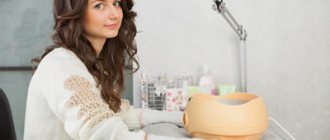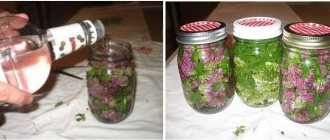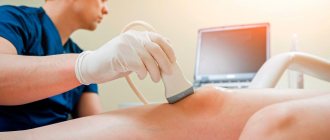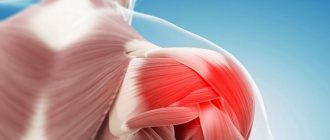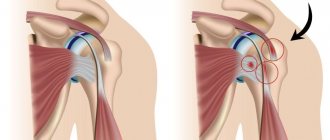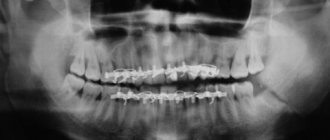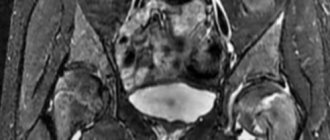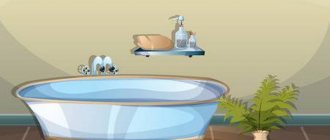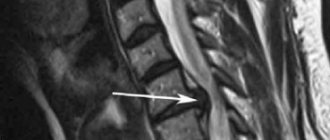Heat therapy is actively used to eliminate various diseases and speed up the healing process of injuries. One of the most popular types of heat therapy is paraffin-ozokerite applications. They allow you not only to warm up the sore spot and relieve discomfort, but also to increase the body’s immunity and speed up recovery. Let's figure out why such applications are needed, to whom they are shown and to whom - under no circumstances.
What are paraffin-ozokerite applications?
An application is a medical procedure that involves applying a carrier of one or another energy to a diseased area of the body. In this case we are talking about thermal energy. Molten paraffin and ozokerite are its carriers.
Ozokerite-paraffin applications can be done in several ways:
- "Flatbread" . Melted paraffin and ozokerite are poured into a mold and wait until the mass hardens to a semi-solid state. Then apply the resulting warm cake to the body.
- Gauze applications . Gauze is moistened in a liquid paraffin-ozokerite mass and applied to the desired area. Several more layers of gauze soaked in the mixture are placed on top.
- Application with a brush . The molten mass is applied in layers to the sore spot using a brush.
At home, the “cake” method is usually used. The other two methods are used in medical institutions and sanatoriums and are safe only under the supervision of a professional. If you handle a hot liquid mass improperly, you can easily get burned. It is much easier to control the temperature of the cake.
Paraffin and its properties
Paraffin is a synthetic substance that is obtained from the distillation of oil. Its main properties are considered to be high heat capacity (retains heat for a long time) and low thermal conductivity (gives off heat slowly). When molten paraffin is applied to the body, it creates a dense film on its surface. The skin begins to sweat. Together with sweat, harmful substances leave the body.
By slowly and evenly warming up an area of the body, and then compressing the skin as it cools, paraffin has the following effects:
- relieves pain and other unpleasant sensations;
- increases skin elasticity, tendon and muscle elasticity;
- improves blood circulation and lymph outflow;
- accelerates tissue regeneration processes.
You can find white and yellow paraffin on sale. For medical applications, the cheaper yellow is usually used. White undergoes more thorough cleaning, which is important for cosmetic purposes, but not important for medicinal purposes.
Ozokerite and its properties
Ozokerite is a natural mountain resin. It has all the properties of paraffin. But unlike paraffin, ozokerite has not only mechanical and thermal, but also chemical effects on the body. It contains minerals, natural antibiotics, and gases. The active substances of ozokerite penetrate through the skin into the body during applications. They contribute to:
- regeneration of damaged tissues;
- accelerating the healing process of injuries;
- relieving inflammation and spasms;
- vasodilation;
- strengthening the immune system in general.
Ozokerite also affects the sore spot as follows:
- relieves itching and discomfort;
- helps with allergic reactions;
- has a resolving effect.
Ozocerite treatment can be carried out not only in sanatoriums and medical institutions, but also at home.
Indications for the procedure
Paraffin-ozokerite applications are used to treat diseases of the musculoskeletal system, skin, and internal organs. They are indicated for diseases and disorders such as:
- arthritis;
- arthrosis;
- traumatic injuries to muscles, ligaments, joints;
- burns;
- frostbite;
- poorly healing wounds;
- ENT diseases;
- pneumonia;
- pleurisy;
- various skin diseases (for example, dermatitis, lichen);
- trophic ulcers;
- limb fractures;
- diseases of the peripheral nervous system (radiculitis, neuralgia).
For children, procedures are performed for the following diseases:
- atopic dermatitis;
- respiratory viral infections;
- flat feet;
- hypertonicity of leg muscles;
- hip dysplasia;
- neuralgia.
Paraffin-ozokerite applications are also used to relax tense muscles. This procedure is often performed before a massage.
Paraffin-ozokerite applications are offered in spa salons, clinics, sanatoriums and other medical and health institutions. One procedure costs an average of 160-200 rubles. You can also make applications yourself. It will be cheaper, since at home the same paraffin-ozokerite mixture is used several times.
Ozokerite and yellow paraffin are sold at the pharmacy. The price is approximately the same: a package (250 g) will cost 80-90 rubles.
Making an applique
And we move directly to technology. Now we will take a closer look at what paraffin-ozokerite applications are. You will understand better how to do them after trying it in practice. It is better to use an adult as a test subject. To conduct a session you will need the following components:
- Cosmetic paraffin (do not use candles) and ozokerite in approximately equal proportions.
- Two containers: one for wax, the second for a water bath.
- Gauze and scissors.
- Cling film.
- Warm diaper, blanket or towel.
- Vaseline to give plasticity to the applique.
Preparing for the home procedure
The procedure is quite simple, but if the “patient” is you, it is better to call someone for help. Applying applications yourself is not very convenient.
Paraffin and ozokerite are prepared as follows:
- Take in a 1:1 ratio. The mass of raw materials depends on the size of the area being processed. For an arm or leg, 250 grams of each substance is usually enough; for the back, you can take more (300-350 g). If the affected area is small, melt 30-50 grams of paraffin and ozokerite.
- The raw materials are broken into pieces and placed in a small saucepan with a tight-fitting lid.
- Melt paraffin and ozokerite in a water bath (the container with the raw materials is placed in a larger pan filled with hot water and heated over low heat).
During the melting process, the container with raw materials must be covered with a lid to prevent splashes from getting into it. Even a few drops of water in the medicinal mass can cause a burn.
If you are preparing a mixture for a child, the proportions will be slightly different:
- 500 g paraffin;
- 250 gozocerite;
- small bottle of Vaseline oil.
The process of preparing the mixture is practically no different from the previous one. The only difference: you need to melt paraffin and ozokerite, and only then add petroleum jelly to them.
Let's get straight to the point
We have everything ready, and now we can make paraffin-ozokerite applications. It’s best to learn how to do it for a child from a nurse or to apply it to dad’s neck for the first time. The first step is to melt the solid over very low heat. Make sure that no water gets into the mixture. It takes much longer to cool than the paraffin itself and can cause skin burns. When the product has completely melted, you can add Vaseline and mix. Pour a layer of the mixture onto prepared wide layers of gauze, laid out on cling film.
Now the place to apply the mixture must be thoroughly dried and several layers of paraffin must be applied with a soft brush. It will set quickly and protect the skin from unpleasant sensations. A slightly cooled gauze is placed on top of it. The heat from this composition will last quite a long time. The child is covered with a blanket and left for 15 minutes.
Do not forget that the use of such applications is possible only as prescribed by a doctor. With hypertonicity, they can bring a quick positive result, but with hypotonicity, on the contrary, they will relax the muscles too much, which will only worsen the condition. Therefore, despite the importance of preventive measures, consult your doctor first. But if the baby is sick, but the temperature is normal, you can make warming applications on the chest and instead of socks.
Paraffin-ozokerite applications at home
Let's describe the "cake" method
- You will need a tray, baking sheet or other suitable form (depending on what part of the body the application is intended for). The molten paraffin-ozokerite mixture is poured into the mold. The thickness of the layer should be at least a centimeter (a little more is possible).
- Now you need to wait until the mixture hardens to a semi-solid state. This will take about 10-15 minutes.
- The “readiness” of the cake is checked with a stick. Pierce the mass. Are there any liquid areas? Then you can apply it. First check the temperature of the cake with your elbow - the mass should be warm, but not scalding. Place the cake on the sore spot, cover with a special medical oilcloth (sold at the pharmacy) and wrap it in a blanket or rug. The cake is flexible and can be wrapped around an arm, leg or finger.
- Leave for 20-30 minutes. If the application is applied to a small child, the exposure time is reduced. For a baby who is less than six months old, 5-7 minutes is enough. If the child is already six months old, the application can be left on for up to 10 minutes.
The size and number of cakes depend on how many areas of the body you need to warm up. The layer should completely cover the sore spot. If it is a large area, use the whole tortilla. Do you need to heat several small areas at once? Cut the paraffin-ozokerite layer into several parts - according to the size of organs or body parts. You will get small cakes, each for its “own” place. If you need to work on one small area, take some raw materials, melt them and pour them into a miniature mold. The smaller the shape, the faster the mixture hardens.
For children
For children, such applications are usually applied to the butt (for dermatitis, hip dysplasia) or to the legs (for colds, injuries, increased muscle tone). One large cake is required for the butt.
Paraffin-ozokerite boots are made for the legs. To do this, it is necessary to cut the resulting large layer into 2 parts. Then half of the cake should be placed on the back side of the child’s leg, wrapped around the limb, not bypassing the heel. You will get an improvised boot with a sole. It should start from the popliteal fossa. The top of the leg is wrapped with medical oilcloth. Do the same with the second leg. Then the baby is put on “adult” (mother’s or father’s) woolen socks or a blanket is wrapped around the paraffin-ozokerite “shoes”. If one leg is injured, only one boot is made.
Paraffin-ozokerite applications are done in a course, every other day. A total of 10-20 procedures are required.
Paraffin-ozokerite applications are indicated for children only with the permission of the doctor. You cannot decide on their necessity on your own.
After the procedure, the mixture of paraffin and ozokerite is collected into a lump, placed in a jar with a lid and left until next time. The mixture must be sterilized before reuse. Just heat it in a water bath for 15-20 minutes.
Doctors' recommendations
In fact, the procedure is quite simple, and therefore anyone can do it at home, the main thing is to practice a little. However, there are several important factors to consider:
- At the height of the hot season, such procedures should not be performed; the air temperature in the room should not exceed 18-20 degrees.
- The temperature will have to be selected individually. It is best to use an application whose temperature you can check as it cools. The substance should be hot enough, but not leave strong redness, much less a burning sensation.
- The therapeutic mixture is not applied to the joints; the doctor recommends applications only to the legs, thighs, calves and toes.
- The exposure time is also selected individually. On average it is about 10 minutes. Before and after the procedure, you need to do a relaxing massage using oil or cream.
Contraindications
For a number of diseases, the use of paraffin-ozokerite applications is prohibited. These include:
- thyrotoxicosis;
- all types of tumors;
- kidney diseases;
- pronounced neuroses;
- cirrhosis of the liver;
- infectious diseases;
- diabetes;
- varicose veins;
- tuberculosis;
- atherosclerosis of brain/heart vessels;
- active hepatitis;
- cardiovascular diseases;
- cysts of any organs;
- epilepsy.
Also, the procedures are not performed during pregnancy and breastfeeding. For skin diseases and inflammatory processes, applications are applied during the period of remission (not during the acute period). Procedures are not carried out
- on the skin with open wounds and scratches, rashes, suppurations;
- at elevated body temperature;
- in case of violation of thermosensitivity.
Applications are not applied in the first three days after injury or the onset of the disease.
Even if you are sure there are no contraindications, it is recommended to consult a doctor. It is also necessary to consult a doctor if you feel unwell after the procedure. As a rule, deterioration in well-being is a normal reaction of the body to thermal and chemical exposure. Still, it is recommended to notify your doctor about any negative changes.
HOW TO GET PHYSIOTHERAPEUTIC TREATMENT AT RCMC
- Call the Contact Center to make an appointment with a physiotherapist (rehabilitation specialist)
- At the reception desk, enter into an agreement for the provision of paid services.
- Pay the bill at the RCMC cash desk or through ERIP
- Come to your appointment at the appointed time.
Attention!
The procedures are carried out after a mandatory consultation with a physiotherapist (rehabilitation specialist). You must have with you an extract from your outpatient health card, the results of fluorography, an ECG, and a gynecological examination (for women) for the current year.
You can undergo all necessary examinations in our Center.
